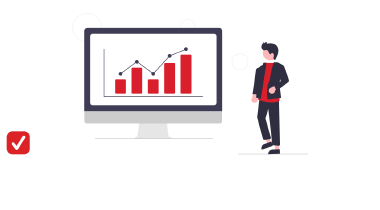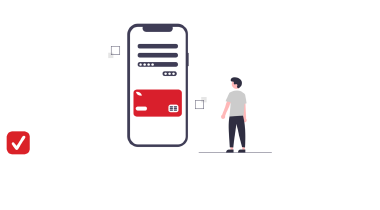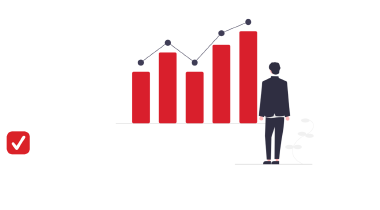Smart strategy for better cash flow for SMEs

Invoices paid too late weigh heavily on your cash flow. Strategic and automated debtor management is an efficient way to deal with this. It is accessible to every organisation, including SMEs. In fact, automated management delivers 30% faster payments while you spend 50% less time. Learn how to implement a smart debtor management strategy for your organisation.
Strategic debtor management also possible for you
Strategic debtor management also provides SMEs with time savings, faster payments and more consistent management. However, it is more than just sending an invoice and calling back debtors. It means to focus on debtor management and a strict approach instead of doing it alongside regular activities. That focus, in combination with the use of smart technology, will save you more time and better payments.
The main advantages of strategic debtor management for SMEs
1) Paid 30% faster through better payment behavior
With smart debtor management, you improve the payment behavior of your customers. You do this by moving fast, formulating an active policy and complying with it. Show your customers that you care about invoices. You can easily follow up invoices via technology, payment reminders are automatic and the communication around them is saved immediately. A cash flow management software automates a lot of processes and saves valuable time.
2) Better cash flow and liquidity through faster payments
Faster payments ensure better cash flow and liquidity. As a result, you as an SME, have less need for financing, whether this is financing invoices or business credit. Better cash flow also means that you have more room for investment or to enable growth financially. Cash collection software helps you secure your cash flow and saves you a lot of time.
3) The customer relationship comes first
If payment of an invoice is not forthcoming, an amicable debt collection process follows. Often through an expensive collection agency, which does everything possible to receive the payment. Even if it is at the expense of the customer relationship. These impersonal debt collection processes are no longer necessary with strategic debtor management. With a good policy and software, you ensure good debtor management and you can start the collection process yourself.
How do you approach strategic debtor management as an SME?
This approach mainly means: no big plans, but policies with concrete actions.
Provide more efficient administration
Send digital invoices or even e-invoices. Efficient administration records things structurally so that errors and misunderstandings are prevented.
Designate a responsible person in the organisation
With smart debtor management technology, you spend 50% less time on debtor management. However, debtor management does need focus, for example, to maintain or improve your customer satisfaction. Designate a responsible person and give this person time to perform the work.
Record steps in the billing process consistently
- What is the payment term?
- When do you send a reminder and the next reminders?
- When is the last memory?
- What do you want to do with the debt collection process?
- When do you offer payment plans?
Use technology to automate your debtor management
Debtor management software takes work off your hands, enabling you to do more, like paying attention to the customers who need it. Or to map payment problems and see where you can improve the process and communication. With automated debtor management, you can offer multiple payment options and enter into a dialogue with your customer per invoice. You remain in friendly and personal contact with your debtors, with all the associated benefits.
Related articles

Invoice finance software, a new way of financing your growth

Order to Cash software (O2C)

